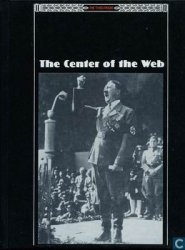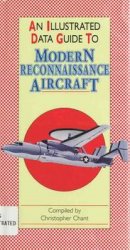With nearly 4 million Italians coming to the United States during the wave of immigration between 1880 and 1920, Italian Americans represented the largest of the “new immigrant” groups from southern and eastern Europe. For Italian Americans, more than for most other ethnic groups, the events of the Great Depression and World War II sometimes exacerbated ethnic tensions, but the war also hastened their assimilation and acceptance.
Italians tended to cluster in urban enclaves, often called “Little Italies,” where they formed mutual aid societies and
Other community institutions and established local Italian-language newspapers. The Catholic Church also played an important role in Italian-American life. Although early Italian immigrants often resented Irish-American dominance of the church in America, by the 1930s the establishment of national parishes and the continuation of traditional religious celebrations in the form of feasts and festivals helped Italian Americans cultivate a unique ethnic and religious identity.
Coming primarily from the agricultural areas of southern Italy, the majority of Italian immigrants were peasants and arrived in the United States with relatively few industrial skills. Italian Americans had very high rates of transiency, as many sought only temporary employment and returned to Italy with their earnings. Generally, Italian immigrants were concentrated in lower-level industrial occupations. However, by the early 1930s, many Italian Americans had slowly begun to move into better jobs in manufacturing and into positions as clerks, mechanics, and carpenters. Often every able family member was expected to contribute to the family’s budget, and by 1930 Italian women represented a substantial proportion of the labor force in the garment trades.
Italian Americans holding blue-collar jobs were hit hard by the Depression and many turned to New Deal programs for support. During the 1930s, Italian Americans also became active members of labor unions and began to exert a greater influence in politics. Though national successes such as those of Fiorello La Guardia were exceptional, increasingly Italians reaped the benefits of political patronage and effectively mobilized support within their communities, gaining power as ward leaders and local officials. With the 1928 presidential candidacy of Al Smith—New York governor and fellow Catholic—Ital-ian Americans went to the polls in much greater numbers than before in support of the Democratic Party. In 1932 and 1936, Italian Americans comprised a substantial portion of the multiethnic coalition that supported Franklin D. Roosevelt and the New Deal.
The approach of World War II created tensions for Italian Americans, as questions of eoreign policy began to overshadow domestic issues. Although many denounced fascism throughout the 1930s, other Italian Americans praised Benito Mussolini for his efforts to revitalize their homeland and create a respected “New Italy.” Owing in part to an exaggerated association with organized crime, Italian Americans were often considered undesirable and untrustworthy—a sentiment reflected in a 1939 national opinion poll in which Italian Americans were rated the worst citizens among the immigrant groups. In 1940, when more than one-third of America’s 1.6 million Italian immigrants were not naturalized U. S. citizens, FDR’s denunciation of the Italian invasion of France as a “stab in the back” and his pursuit of anti-Axis interventionist policies prompted many Italian Americans to desert the Democratic Party in the ELECTION Of 1940.
Although tension between the United States and Italy and their lack of acceptance in America caused many Italian Americans to be troubled by conflicting loyalties, after the attack on Pearl Harbor in 1941 and the German and Italian declarations of war on the United States, Italian Americans wholeheartedly supported the war effort, demonstrating their loyalty by serving in the military and working in defense industries. Early in the war, however, unnaturalized Italian-American immigrants bore the stigma of being classified as enemy aliens and encountered suspicion and prejudice in employment. But unlike the massive relocation of Japanese Americans, only a few hundred of the 600,000 Italian aliens in the United States were interned. In 1942, on the Italian-American holiday Columbus Day, Roosevelt removed Italian Americans from enemy alien status. While this was done partly out of concern for the upcoming midterm congressional elections and the declining support for Democrats among Italian Americans, it was also a recognition of Italian-American loyalty.
Although they continued to encounter prejudice, Italian Americans by the end of the war had taken important steps toward acceptance in American society. In addition to modest political and economic gains made during the depression and World War II, many of Italian Americans were able to take advantage after the war of the GI Bill of Rights in order to enter the middle class. Educational opportunities and loans from the Federal Housing Administration helped to stimulate economic and social mobility among Italian Americans and allowed them opportunities to find the recognition and acceptance that earlier generations had been denied.
See also politics in the Roosevelt era.
Further reading: Ronald H. Bayor, Neighbors in Conflict: The Irish, Germans, Jews, and Italians of New York City, 1929-1941 (Baltimore: Johns Hopkins University Press, 1978); Stephen Fox, The Unknown Internment: An Oral History of the Relocation of Italian Americans during World War II (Boston: Twayne, 1990).
—Shannon L. Parsley




 World History
World History









